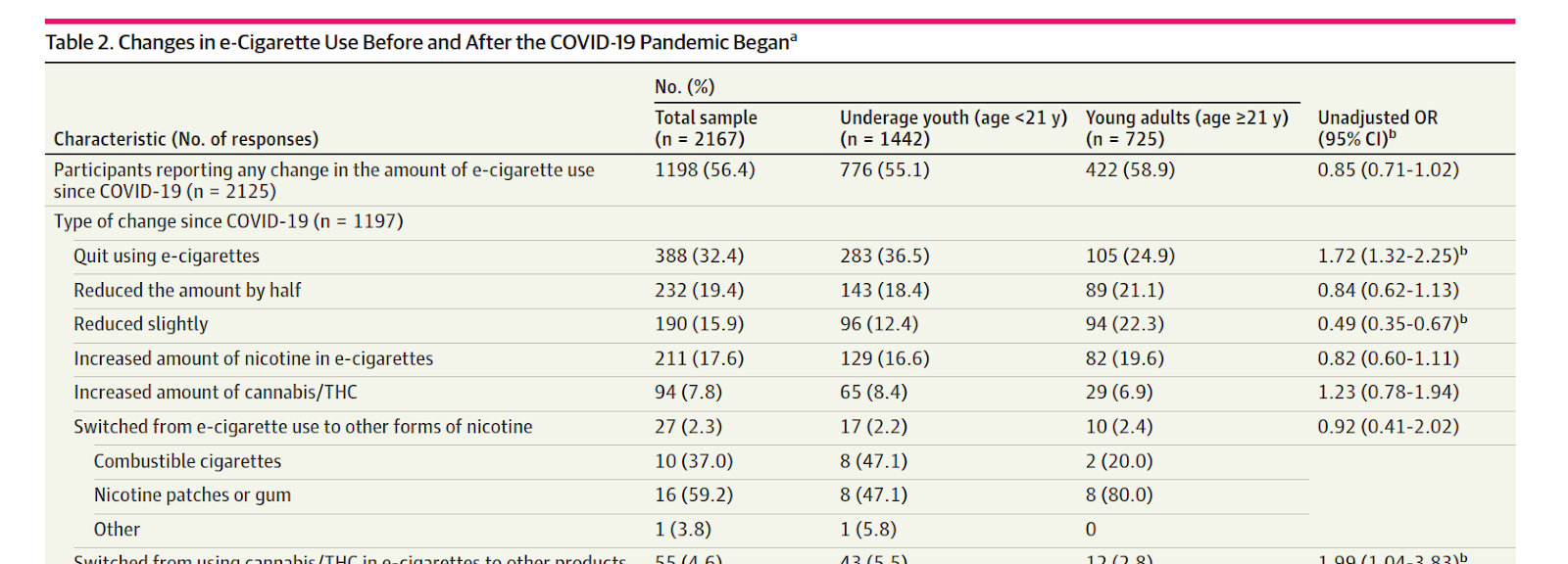

By Kirsten Siebenga
Before COVID-19, an epidemic was facing our youth. The 2019 North Carolina Youth Tobacco Survey highlighted that nearly 21% of high school students and 6% of middle school students in North Carolina reported current e-cigarette use. As seen in the chart below, the use of traditional cigarettes among youth in North Carolina was declining until the introduction of e-cigarettes in 2011 interrupted this trend. Between 2011 and 2019 e-cigarette use among North Carolina high school students had ballooned by 1129%.

Though e-cigarettes have sometimes been framed as a healthier alternative to traditional cigarettes, e-cigarette use among youth and young adults is a concern because, while users do not experience the harmful effects of smoke, most e-cigarettes do contain nicotine. The Surgeon General's Report describes that nicotine is known to be an addictive chemical and when exposed to young, developing brains it can impede development. Additionally, the report cautions that exposure to e-cigarette aerosols can include up to 31 different chemical compounds that include likely irritants and carcinogens. Exposure to e-cigarette aerosols can also impact the user's cognition, attention, and even mood.
In response to the dangerous upward tick of youth e-cigarette use, policies have been implemented in an effort to better protect youth. Federal policy efforts like Tobacco 21 effectively raised the purchasing age of tobacco products, including e-cigarettes, to 21 years of age. According to one national study, while this law has been an important protection for young people, underage youth are still able to access these products through brick and mortar stores and online e-cigarettes shops pointing to a need for better enforcement of these policies.
COVID-19 interrupted the trend of increasing e-cigarette use among young people and created obvious obstacles for underage youth trying to access these products that even federal policies like Tobacco 21 could not do. A study from the American Journal of Public Health, reports that school closures, stay at home orders, social distancing measures, and the cancellation of in-person events during COVID-19 created obvious barriers to e-cigarette access for youth. While many retailers like gas stations, grocery stores, and drug stores remained open due to their designation as an essential business, closures of non-essential businesses like vape shops also impacted youth who relied upon these retailers to purchase e-cigarettes.
The 2020 National Youth and Tobacco Survey was the first large national survey to elucidate the impact of COVID-19 on the youth vaping epidemic. The study found that youth and young adults between the age of 13-24 years use of e-cigarette declined during the first year of COVID-19. Over half of respondents reported changing their e-cigarette behavior in some way during COVID-19. Around 33% of respondents reported quitting e-cigarettes while 17.6% reported increasing the amount of nicotine in their e-cigarettes.

The study also emphasizes that youth and young adults reported difficulty accessing e-cigarette products due to the closure of stores where they typically purchased their products and longer shipping times of online e-cigarette purchases. Young adults also reported changes in e-cigarette use during COVID-19 due to concerns that e-cigarettes may weaken their lungs (25%), inaccessibility of e-cigarettes (19.5%), or a combination of these 2 reasons (32.1%).
The Healthy NC 2030 report identifies target metrics for priority population health indicators, and identifies levers of change to reach these targets. Healthy NC 2030 identified a reduction in youth tobacco use as one of the priority population health targets. While the data outlined in this post provide hope for a step toward achieving the Healthy NC 2030 goal, it is important to consider that youth e-cigarette use could bounce back to its pre-COVID levels as many of the barriers presented from the COVID-19 closures dissipate. The Healthy NC 2030 target identifies levers for change to continue to protect North Carolina youth from the harms of e-cigarettes. North Carolina has made some important progress towards implementing some of these levers, but there is still room to go.
Healthy NC 2030 Levers for Change: